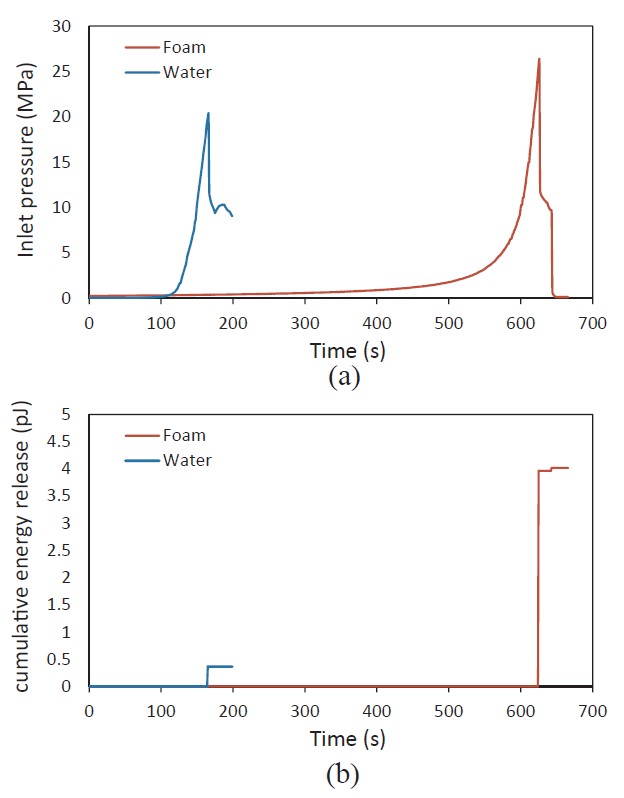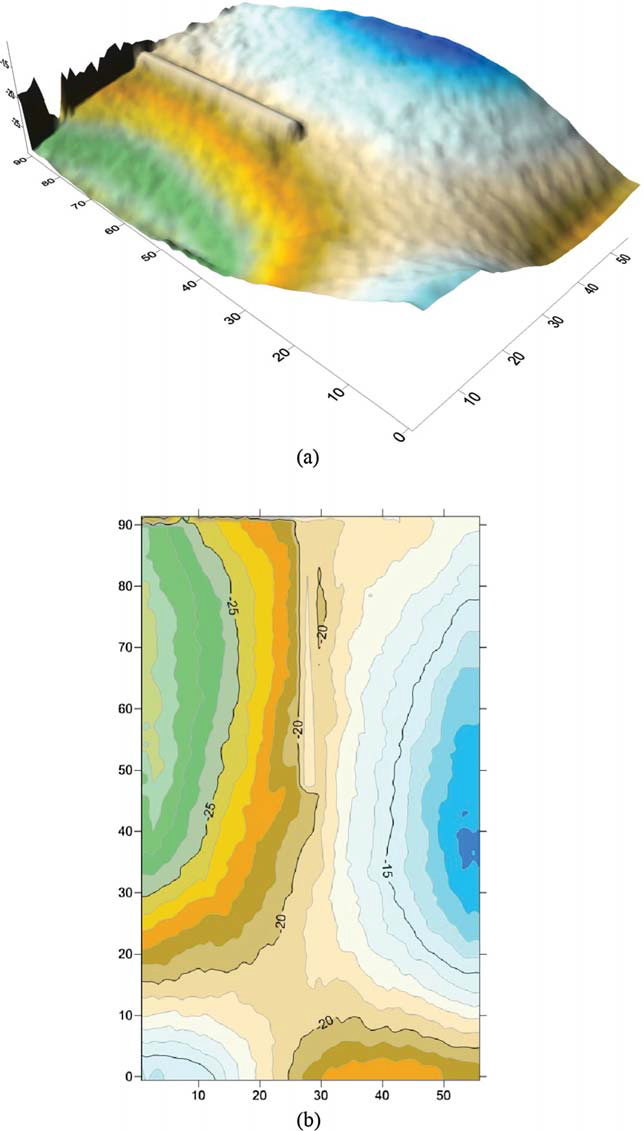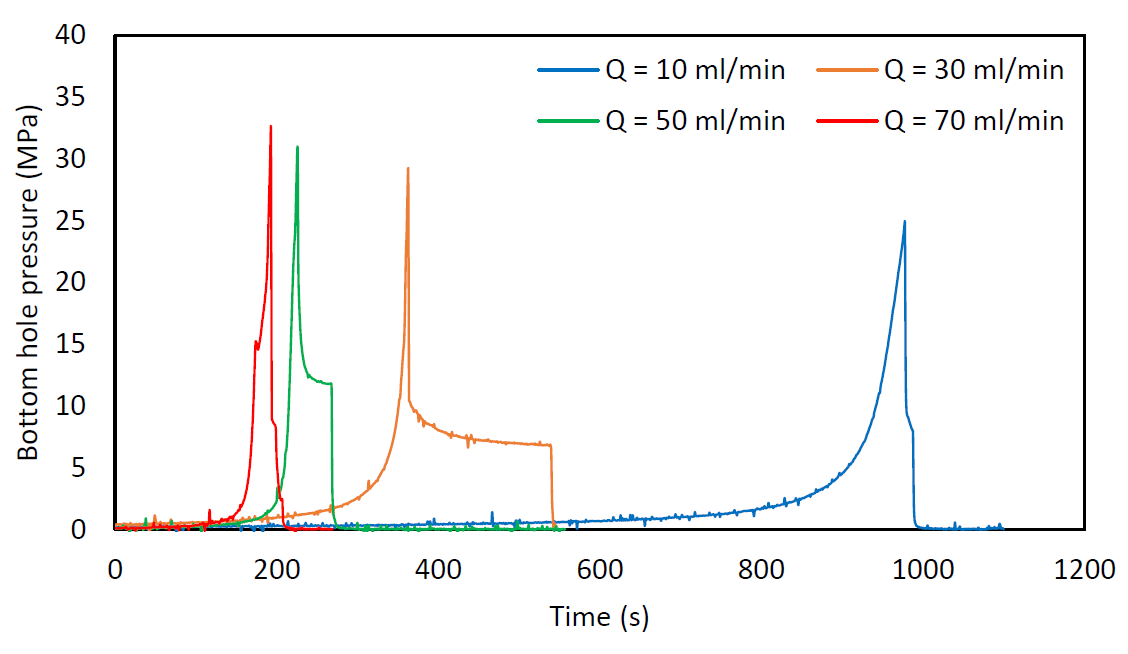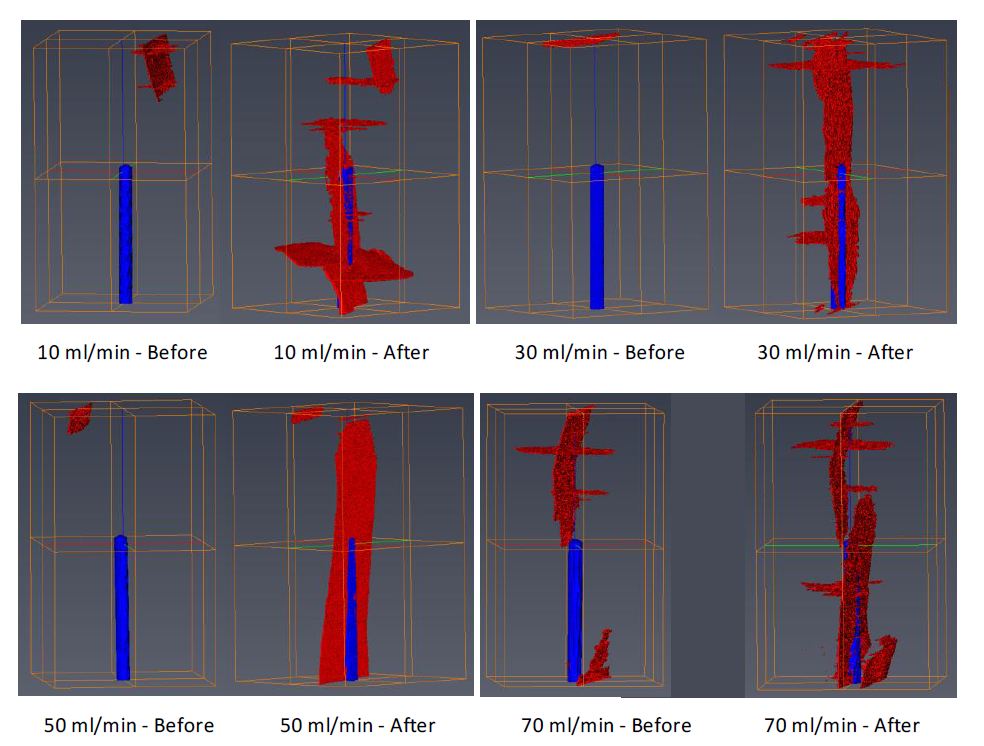An interesting fact is that, according to the Department of Industry, Innovation and Science (DIIS), in the past ten years, the average annual growth of coal consumption in Australia decreased by 2% while that of natural gas increased by 4.1%. These statistics clearly illustrate that Australia is now transiting from coal to natural gas, considering the energy consumption. With these levels of dependence on natural gas, it is difficult to survive by only utilising conventional natural gas. Therefore, reservoir stimulation techniques need to be used in order to extract unconventional natural gases such as shale gas and tight gas. Of these technologies, foam-based fluid fracturing has the greatest potential to extract shale and tight gas effectively.
The recent studies reveal that, Foam-based fracturing fluid leads to a higher breakdown pressure of 26.3 MPa, which is about 29% higher than that of water (Fig.1). This is mainly due to the high viscosity of foam (150 mPa·s), which is about 200 times greater than that of water. Also the results show that the fracture pattern induced by hydraulic fracturing is significantly fracture fluid-dependent, and foam-based fluid generates a complex fracture with a twisted nature and higher fracture surface area compared to water (Fig.2). Therefore, the use of foam-based fracturing fluid is favourable for the extraction of greater amounts of natural gas. Moreover, the energy released in foam-based fracturing is about 10 times higher compared to conventional water-based fracturing, which is a favourable condition to enhance secondary and micro-fractures in the reservoir rock. This will enhance the productivity of the fracture treatment for natural gas production.
Experiments have been conducted using shale samples to investigate the effect of fracturing fluid injection flow-rate on hydraulic fracturing and associated fracture characteristics. Results reveal that the breakdown pressure of shale increases with increasing foam injection flow-rate due to the penetration of disintegrated gas into the rock (Fig.3). This is caused by the destabilisation of foam when it is in contact with reservoir rock. In addition, the time to achieve breakdown decreases, while the total foam consumption increases with increasing injection flow-rate. For example, an increase of foam injection flowrate from 10 to 70 ml/min causes the breakdown time to decrease by 80% while the foam consumption for fracturing increases by 40%. Therefore, concerning the economic aspects of hydraulic fracturing, low injection flow-rates are much more economical than high injection flow-rates.

Fig.1. Variation of (a) inlet pressure and (b) cumulative energy, with time for water- and foam-fractured specimens (W1 and F1).

Fig.2. Surface topography of foam-fractured specimen (a) 3-D view (b) 2-D view with surface contours (All units are in mm).

Fig.3. Variation of the bottom hole pressure with time for different flowrate conditions

Fig.4. Fracture pattern before and after the hydraulic fracturing with different injection flowrates
